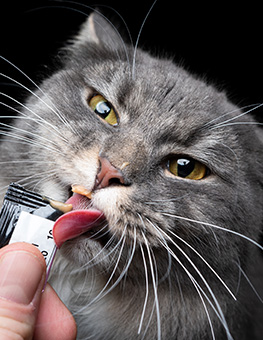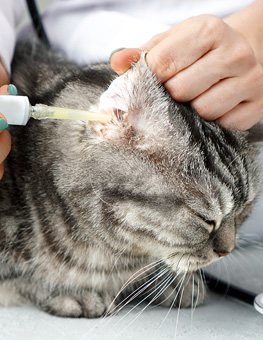Teaching Your Cat to Love Their Carrier
One of the most stressful times in your cat’s life (not to mention your life!) is when it’s time to go to the vet. One look at the carrier sends your cat flying under the bed, and by the time you’ve wrestled them into the dreaded cat carrier, you’re late to your appointment. Believe it or not, there is a way to make these trips to the vet much easier on both of you: carrier training.
You don’t need to be a cat expert to carrier train your cat. It’s easy! You should begin the process several weeks before you need to take your cat to the vet, so there is no need to rush any steps.
Keep Your Carrier in Plain Sight

What if you could avoid having to chase your cat all around the house when he sees the carrier? Of course, your cat runs when they see you pull the carrier out of the closet. It’s a tell-tale sign that something very unpleasant is about to happen. If you leave your carrier out in plain sight, its presence becomes normal and the cat will adjust to seeing it every day.
There are many stylish carriers on the market that double as cat beds if you are worried about the typical hard plastic carrier being an eyesore in your home.
Make the Cat Carrier a Safe Place
Once your cat has adjusted to the sight of the carrier being out in the open, you can begin to work on teaching them that it can be a good place, too. Fill the carrier with soft blankets, making it a cozy hiding place for your cat. You can hide yummy treats, catnip, or new toys inside, whichever you think your cat will appreciate most. Whatever you choose, it should be a special treat that your cat doesn’t get very often. If you witness your cat willingly investigating the carrier on his own, praise him!
Begin Closing the Door

Now that your cat is used to the carrier and goes inside on his own terms, you can train him to go in on cue. For novice cat trainers, just toss your cat’s favorite treat inside, wait for him to go in, close the door for 5-10 seconds, and then let him out. For those who are more experienced, you can try pairing it with a command such as “Go in” or “Carrier.” Toss in the treat, and give the command as soon as your cat pokes his head inside.
Again, close the door while he is eating the treat, then open it when he is done. You can do this exercise once or twice a day.
Go for a Ride!
After your cat has mastered this, it’s time to go for a ride. At first, you can pick up the carrier, walk around your house, and then put it back down. Then, you can build up to going outside to the car, putting the carrier in, driving around the block, and coming back inside. Each time this happens, your cat should be rewarded profusely, both with food inside the carrier and lots of praise throughout. Finally, take your cat to the vet without a hitch.
Troubleshooting

If at any time your cat starts to meow in distress, isn’t interested in taking food, or stops wanting to go inside the carrier altogether, simply slow down and go back a few steps. If he is stressed or doesn’t want to participate, you’re no longer teaching him to love the carrier. If you’re using a traditional plastic hard carrier and your cat won’t have anything to do with it, follow the above steps, but start with the top taken off the carrier and only add it back on when your cat is comfortable going inside the bottom only. If your cat isn’t motivated by food, consider training right before a mealtime, or use a feather wand to lure him inside instead.
If All Else Fails
Inevitably, you may have to get your cat to the vet at some point before he is fully carrier trained. Follow these steps to make getting him into the carrier as safe and stress-free as possible until you are able to practice the steps outlined previously:
- Purchase a large, hard plastic carrier with a top door. If a top-loading carrier is not available, place your carrier in a vertical position with the front door open at the top. Soft carriers are not recommended for cats that are extremely difficult to transport.
- Before getting your carrier out, place your cat in the bathroom, or a room where he can not hide or wedge himself under anything like a bed.
- Gently wrap a blanket or towel around your cat to pick him up. Make sure any sharp parts are contained inside the blanket, like teeth and claws. It’s okay to have the blanket covering his head, and may in fact make him calmer.
- Lower your cat into the carrier with the blanket wrapped around him so he is unable to kick out and scratch you. As you close the lid, you can pull the blanket out with you or just leave it in the carrier with him. If you are using the carrier’s front door turned up vertically, lower your cat in back feet first.

















